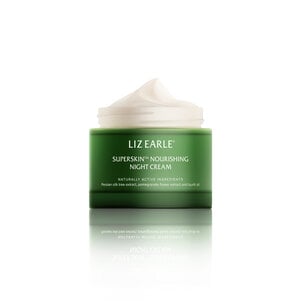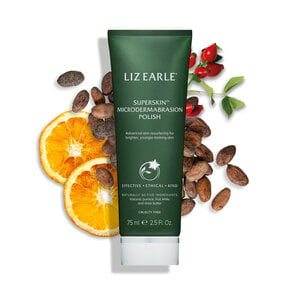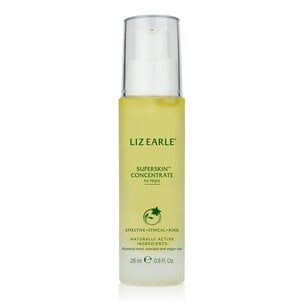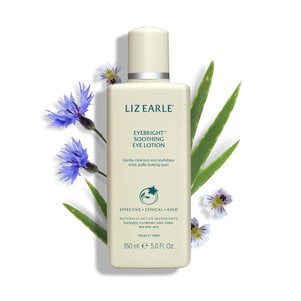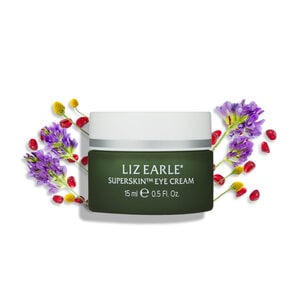
How to hydrate your skin
May 31, 2024
4 min read
From time to time, we all experience the uncomfortable sensation of our skin feeling a touch too dry. We naturally lose water every day, but if our skin loses more than it receives, this is when it becomes dehydrated. Skin that feels stripped, tight or looks a little duller than usual are all signs that it might be dehydrated and craving some extra nourishment.
There’s a load of things that can cause dehydrated skin, from cold weather to reactions to new skincare products or simply not drinking enough water throughout the day. Thankfully, as well as dehydrated skin being a common skin concern, there are many ways you can go about solving the problem, too.
Whether you’re wanting your skin to look plumper, to get back your natural glow or would like to help prevent breakouts, skin hydration is the secret.
What are the visible signs of dehydrated skin?
First, we need to be clear on the difference between a dry skin type and dehydrated skin. Someone with a dry skin type will naturally have a lack of (or less) oils in their skin than somebody with a normal or oily skin type. Dry skin tends to affect the whole body and it can make skin feel rough or flake.Dehydrated skin is a lack of moisture in the upper surface layers and this can happen at any time, and affect any skin type – even oily skin. It might feel tight or uncomfortable and can cause visible signs of ageing like fine lines and wrinkles to appear more obviously. As your skin’s natural repair process will have been compromised, it can also lead your skin to feel bit sensitive, making you more prone to skin that feels irritated and the appearance of blemishes and you might develop some dry, scaly looking patches of skin.
So how does our skin become dehydrated? Factors such as the amount of water you’re drinking, the temperature outside or the products you’re using on your skin can all have an effect, as can hormonal changes in the body such as perimenopause and menopause.
The good news is that there are a few ways you can keep skin looking and feeling hydrated from home. Here are our expert tips for regaining a happy moisture barrier and a youthful glow.
Drink more water
However obvious it may sound, it’s important to remember that the amount of water you drink throughout the day will have an effect on how hydrated your skin is. But did you know your skin is the last organ in the body to receive this water? This means that if you’re not topping up your hydration levels by sipping from your water bottle throughout the day, your skin will be going without moisture.So, what can you drink to hydrate skin? Plain water is the best option, but cordials, tea, coffee and fruit juices can help contribute towards your recommended eight glasses a day. You can also get some hydration from the food you eat, so aim to eat a varied diet with some foods high in water content, like cucumber or watermelon.


Opt for hydrating ingredients in your skincare products
The best hydrating products for you will likely depend on your skin type, but there are a few key products and ingredients to look out for, specifically water-based skincare products.Firstly, you might be wondering, what’s the difference between hydrating the skin and moisturising it? Well, moisturising focuses more on the skin’s barrier (the outermost layer) and usually their formula is designed to help prevent water loss from the inside of the skin. However, hydrating the skin refers to imparting the surface of the skin with water to give that ‘plumped-up’ effect. A routine that focusing on hydration and moisturisation will help to combat any of the visible effects of dehydrated skin. Here are some of our expert suggestions for hydrating skin products:

Cleanser
The bio-enhanced formula of our Cleanse & Polish™ Hot Cloth Cleanser is a good choice for all skin types, enriched with moisturising cocoa butter, this creamy cleanser deeply cleanses the skin whilst boosting hydration levels.For something that also works to support skin with visible signs of ageing, our Superskin Advanced Nourishing Cleansing Balm powered by acacia tree extract; a plant-based alternative to collagen, helps skin regain the look of youthful volume.

Toner
Toners are usually used after cleansing to prep the skin for any specially formulated serums and moisturisers. Our Instant Boost™ Skin Tonic Toner, with hydrating aloe vera, refreshes, soothes and brightens the skin whilst also replenishing moisture.
Serum
Instantly quenching thirsty skin with a concentrated hydration boost, our Skin Repair™ Hydrating Serum powered by plant-based hyaluronic acid and snow mushroom, hydrates multiple surface layers of the skin. Top tip – make sure to apply any products with hyaluronic acid to damp skin to improve their efficacy.
Hydrating masks & treatments
Hydrating masks and specialised treatments are great to add into your routine when you’re trying to hydrate the skin. You only need to use them once or twice a week as an extra step to help boost your moisture levels and maintain a healthy looking skin barrier. Our Hydrating Cream Mask uses a blend of nourishing shea butter to replenish alongside apricot kernel oil, which is rich in essential fatty acids.
Moisturiser
Finish off your routine with a hydration-loving moisturiser that’s suited to your skin type. Dry skin types should pick a thick, cream-like formula for more intensive hydration, like our Skin Repair™ Rich Cream, whereas oily skin types may prefer to use a lighter option, such as our Skin Repair™ Gel Cream which offers cooling, shine-free hydration. Those with sensitive or combination skin could opt for our Skin Repair™ Light Cream.Selecting a night cream with the right ingredients also gives your skin the chance to be hydrated overnight. Our deeply replenishing Skin Repair™ Hydrating Night Cream with plant-based hyaluronic acid and 4 o’clock flower, moisturises to boost skin’s night-time renewal, while our Superskin™ Nourishing Night Cream smoothes, hydrates and helps skin feel firmer.

Reduce your caffeine and alcohol intake
While a couple of cuppas can help keep you hydrated throughout the day, it’s best to cut down on drinking both caffeine and alcohol if you’re looking to help tackle dehydrated skin. This is because they can both considerably reduce your skin’s natural water content. You don’t have to cut them out completely – instead, try and limit it to two cups of coffee and a glass of wine per day.
Stay away from extreme temperatures
External factors can also cause havoc for your skin, especially extreme temperatures. The lack of humidity in cold weather makes it tough for your skin to retain moisture, whereas high temperatures can strip the protective oil layer from the surface of your skin, which will also cause the appearance of dry, itchy feeling patches.The same can be said for using hot water in the shower or bath. To keep your skin feeling as healthy and hydrated as possible, always keep your water temperature at a lukewarm level, especially when washing your face.
SHOP THE PRODUCTS






